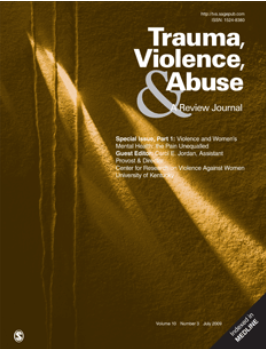What Are the Mechanisms Underpinning Intergenerational Transmission of Violence Perpetration? A Realist Review
IF 5.4
1区 社会学
Q1 CRIMINOLOGY & PENOLOGY
引用次数: 0
Abstract
Successive generations are more likely to carry out acts of violence in households where an individual has either perpetrated or been subjected to violence. While research to date has mostly concentrated on direct associations between violence experience or perpetration in generation 1 and violence perpetration in generation 2, there is limited evidence regarding the underlying mechanisms of the transmission of intergenerational violence perpetration. We conducted a realist review to adjudicate theories of the underlying mechanisms of intergenerational violence perpetration. Following Realist and Meta-Review Evidence Synthesis: Evolving Standards, we searched six databases across three phases considering all study designs. We identified 28 studies that were analyzed thematically. Included studies focused on perpetration of intimate partner violence, child abuse and neglect, youth violence, and violent crime. We identified five underlying mechanisms of intergenerational violence perpetration: (a) normalization of violence and harmful gender norms, (b) modeling and imitation, (c) emotion dysregulation, (d) high vulnerability, and (e) impaired relationships. These mechanisms operate and unfold differently across contexts where violence is experienced or witnessed. Our realist review highlights how violence perpetration may be transmitted across generations. We propose that interventions focused on norms and attitudes, mental health, social welfare, and parent–child relationships may be useful in preventing violence perpetration across generations.暴力行为代际传播的机制是什么?现实主义评论
在一个家庭中,如果一个人实施或遭受暴力,那么连续几代人更有可能实施暴力行为。虽然迄今为止的研究主要集中在第一代暴力经历或暴力行为与第二代暴力行为之间的直接联系,但关于代际暴力行为传播的潜在机制的证据有限。我们进行了一项现实主义回顾,以裁定代际暴力行为的潜在机制的理论。根据现实主义和元评价证据综合:不断发展的标准,我们在考虑所有研究设计的三个阶段检索了六个数据库。我们确定了28项研究进行了主题分析。纳入的研究侧重于亲密伴侣暴力行为、虐待和忽视儿童、青少年暴力和暴力犯罪。我们确定了代际暴力发生的五种潜在机制:(a)暴力和有害性别规范的正常化,(b)建模和模仿,(c)情绪失调,(d)高度脆弱性,(e)关系受损。在经历或目睹暴力的不同背景下,这些机制的运作和展现方式不同。我们的现实主义评论强调了暴力行为是如何代代相传的。我们建议,关注规范和态度、心理健康、社会福利和亲子关系的干预措施可能有助于防止几代人之间的暴力行为。
本文章由计算机程序翻译,如有差异,请以英文原文为准。
求助全文
约1分钟内获得全文
求助全文
来源期刊

Trauma Violence & Abuse
Multiple-
CiteScore
13.60
自引率
7.80%
发文量
131
期刊介绍:
Trauma, Violence, & Abuse is devoted to organizing, synthesizing, and expanding knowledge on all force of trauma, abuse, and violence. This peer-reviewed journal is practitioner oriented and will publish only reviews of research, conceptual or theoretical articles, and law review articles. Trauma, Violence, & Abuse is dedicated to professionals and advanced students in clinical training who work with any form of trauma, abuse, and violence. It is intended to compile knowledge that clearly affects practice, policy, and research.
 求助内容:
求助内容: 应助结果提醒方式:
应助结果提醒方式:


